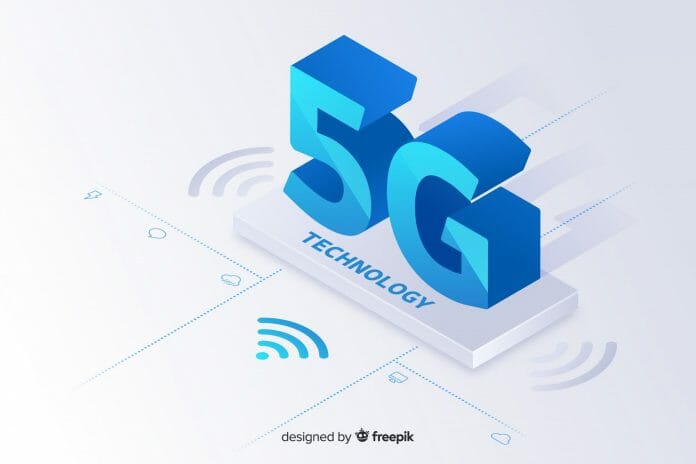By Gayan Koralage, Director of Strategy, edotco Group
Exploring emerging technologies such as edge computing to fuel the sector’s growth
As the world settles into a new normal, the unprecedented demand for connectivity seen during stringent Covid-19 lockdowns will become a permanent feature of this new reality – we’ll continue to observe streams of data from various sources, a surge in devices joining networks, and an increase in Software as a Service (SaaS)- based applications.
Across the board, data consumption increased during the pandemic when the internet became a literal lifeline as global populations observed social distancing orders. Consumption patterns also shifted, due to remote working and learning, and an uptake of e-commerce services and digital entertainment, while concentration shifted from commercial centers towards residential areas.
Recovering the Telecoms Sector
The telecoms industry will need to review long term responses to enable recovery and put next generation technologies back on track with the AI of developing networks to meet tomorrow’s connectivity and capacity demands. Players within the telecom ecosystem will need to invest in and prioritise agile networks that ensure a quicker time to market, network automation through the digitalisation of processes, and scalable solutions to ensure growing capacity needs are met.
Options that ride on the cloud and are fundamental to establishing a new normal – as well as emerging technologies, such as edge computing, will play a part in this deployment and will be beneficial for the telecom vertical, offering new revenue channels for Mobile Network Operators (MNOs) around the world.
Emerging Technologies as an Enabler in the Telecoms Sector
Edge computing in telecoms, often referred to as Mobile Edge Computing, MEC, or Multi-Access Edge Computing, provides execution resources (to compute and store data) for applications with networking taking place close to the end users, typically within or at the boundary of operator networks.
Edge computing offers benefits such as lower latency, as processing takes place at the site (“close to the edge”) as opposed to on the cloud, high bandwidth, device processing and data offload as well as trustworthy computing and storage.
As we face mass digitalisation, spurred on by the pandemic, there is an urgent need to accelerate the adoption of emerging technologies. We must move faster than ever before as we track towards deploying the networks of the future and embrace the new reality for the telecommunications industry.
5G and Cloud Software Defined Networks
The Ericsson Mobility Report June 2020 forecasts 190 million 5G subscriptions by the end of the year, and 2.8 billion by the end of 2025. As networks and digital infrastructure played a key role in keeping communities connected during the height of the pandemic, the role of infrastructure providers, such as edotco, will expand.
5G-ready infrastructure will include newer technologies such as small cells, Antenna-as-a-Service and edge computing for a holistic model to be shared by multiple operators for greater efficiency. Edge computing is well-suited to applications that benefit from high performance and optimum utilization of network resources.
It can be adapted for telecommunications, as well as alternate reality (AR), virtual reality (VR), gaming, and automotive applications. By incorporating edge capabilities, service providers will be building out a more complete 5G infrastructure.
Network automation will also play a role in the long-term response by telcos and can be applied through self-organized networks and Machine Learning (ML) processes. Beyond 5G, the next transition will involve cloud software and defined networks, rendering 2G and 3G networks obsolete.
Dispersed ‘mushroom’ infrastructure will offer agility and adaptability for infrastructure providers, and lead to cost savings by deploying infrastructure only where and when it is required. These elements will develop ‘self-curing networks’ that have the machine-assisted ability to diagnose and rectify inefficiencies, leading to a reduced dependence on human intervention, and thus reducing downtime.
Expediting the Rollout of a 5G-Ready Service Portfolio
Multiple elements are needed for a successful 5G-ready service portfolio. At edotco, we are developing various solutions that will service different parts of the 5G ecosystem. In-Building solutions (IBS) will enable connectivity for high-density, high-capacity buildings such as stadiums, manufacturing plants and business and entertainment precincts, and can be enabled by the synergistic deployment of indoor small cells, edge computing, and private networks.
Street furniture, outdoor small cells, and Millimetre (MM) wave technology can be deployed to build smart cities with smart solutions that increase capacity while blending seamlessly into dense urban environments. Mobile edge computing, that supports high throughput, low latency and mission critical applications, will boost transportation, healthcare, and industrial parks.
Finally, outdoor macro cell sites require network densification, through solutions such as fibre, Antenna as a Service (AaaS) and Open RAN.
In the new normal, 5G will increase capacity demands, changing network utilization patterns. While aiming for post-pandemic recovery, businesses and the industry as a whole will need to anticipate and account for a slowdown in business.
Being nimble, adaptive, and open to exploring emerging technologies is key to pivoting by riding the wave of digitalisation. As technologies are tested and deployed, more use cases can be studied, enabling continuous improvement as we step into the next phase of development.
Staying ahead of the curve will be key to moving through the three stages of relief, revival, and revitalisation to boost the business and the industry overall. The industry and its key players must collaborate and work towards the common objective of boosting the telecommunications sector, and the way forward is through rapid adoption and deployment of emerging technologies, such as edge computing, to develop next generation networks.









